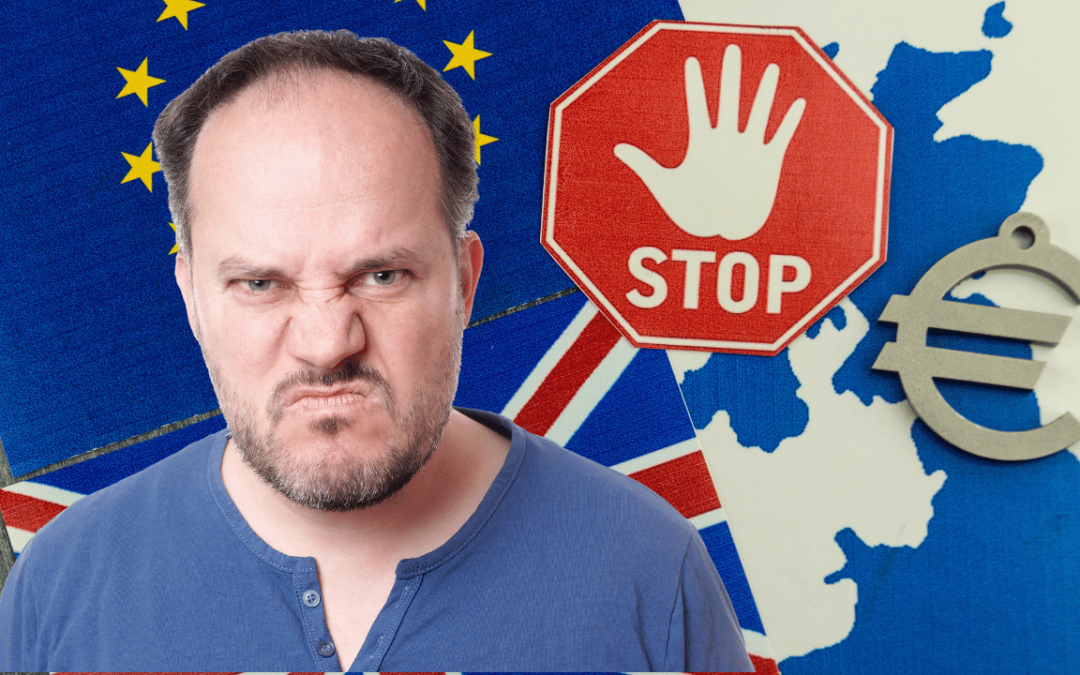Here are the short, concise answers and resources to help you work out how many days you can spend in the Schengen area.
Prefer to watch the video? Click the picture below. Or carry on reading for the article!
1/ What is the 90/180 Schengen rule?
If you’re a non-EU citizen, you can only spend a total of 90 days in any 180 day period in the Schengen Area. Those days don’t have to be together, it could be a weekend in France, then a gap of a few weeks, then a month in Spain, another gap, and then a few weeks in Belgium. You get the picture, just add up the days you spend in Schengen countries within a period of 180 days, and it can’t be more than 90.
2/ What is the Schengen Area?
The Schengen Area is a group of European countries with no internal borders, which makes travel and trade easier within that area. If you imagine those countries in one big block, there’s just one outer border, so if you sail in or drive in there will be border controls, and you’ll need to show your passport. Of course you can fly directly into any of the countries too, bypassing the outer border, so basically all of the airports act like an outer border too. But once you’re in, you can travel from country to country without needing to go through border control and show your passport.
3/ Do you need a visa to get into the Schengen Area?
This depends on your passport.
EU citizens don’t need visas to get into the Schengen Area.
All other country’s citizens are called Third Country Nationals. The citizens of 63 of these countries have an automatic visa waiver so they can get in without a visa, but as they go through the outer border, or land directly into an airport in the Schengen Area, their passports are stamped with a date which can be checked to make sure they’ve not broken the 90/180 rule when they leave.
The only citizens who need a Schengen Visa are third country nationals from outside of those 63 countries.
The ETIAS digital system, due to be implemented in 2024, will supersede passport stamps and make it easier for border guards to check whether you’ve broken the rules.
4/ Who is the 90/180 day Schengen rule for?
The 90/180 rule is only for third country nationals. That’s the name given to people who aren’t citizens of an EU country or part of the Schengen Area, which isn’t quite the same thing. More about that in a minute.
5/ Is the Schengen Area the same as the EU?
No, there are quite a few countries that fall into both categories, EU and Schengen, but there are exceptions. It’s not totally straightforward so click HERE to find the full list of countries on an official EU website so you can take your time to look at it.
6/ Does the 90/180 rule apply to EU citizens and their non-EU spouses?
No, the 90/180 rule doesn’t apply to EU citizens, because they have freedom of movement within the EU, their passports don’t get stamped at the outer border. They can also live and work in any of the member countries, as long as they fulfill the requirements of the individual member states. Sometimes people get confused between the 90/180 Schengen rule and what I call the 90 day rule, which applies to individual countries and is the length of time you can spend in a country like Spain for example before you are expected to apply for residency of that country.
Non-EU spouses of EU citizens, when they’re traveling with their partners, are entitled to the same freedom of travel as EU citizens. But take a copy of your marriage certificate in case you’re challenged to prove your relationship.
7/ Is there such a thing as an EU citizen?
Strictly speaking you can’t be a citizen of an organization, only a country. If you talk about ‘EU citizens’ on social media like I do, you will at some point find yourself being corrected vehemently by a pedant with too much time on their hands. However, if you look at the EU residency card in Spain, it says that it’s the card of a citizen of the European Union, and that’s official. Besides, it’s in common parlance to talk about EU citizens so there’s no point trying to tell off millions of people for communicating their status clearly and precisely when the alternative is long winded and annoying, just like the pedants.
8/ As a non-EU citizen resident in an EU country am I immune to the 90/180 day rule?
Third country nationals who gain residency in EU countries with a visa are immune to the 90/180 rule, but only in their country of residency. If they want to travel around any other EU countries, they should obey the 90/180 rule. So a UK passport holder who’s now a resident of Spain can spend as much time as they want in Spain, but if they travel to France for example, they should only stay there for up to 90 days before returning to Spain or leaving the Schengen Area altogether. In practice it’s a bit difficult to police this situation because there are no internal border checks within the Schengen Area, so if you’re driving about from country to country for example, who’s going to notice? At some time in the future, will ETIAS be connected to number plate reading technology? Best to stick to the rules and leave a safe digital trail.
9/ If I get residency in an EU country, does that make me a citizen?
No, citizenship is all about which passport you have, or can have. Residency is just permission to live in a country other than the one you’re a citizen of. You can eventually become a citizen of another country after you’ve lived there for a certain amount of time. The amount of time varies from country to country, and you also usually have to pass a test to show your knowledge of the country and its language as part of your application.
10/ What is the rolling 180 day period?
The rolling 180 day period is often what confuses people about the 90/180 Schengen Rule. I like to think about it like this: today is always day 180. Count backwards on the calendar from today (day 180) to day 1, then count how many of those days you spent in the Schengen Area. When tomorrow comes, that becomes today, and today is always day 180, so the whole 180 day period has rolled forward one day. What was day 1 is no longer in the rolled on period of 180 days, so if you spent that day in Schengen, it doesn’t count anymore. The following day is now day 1. Is that clear?
If you want to work out how many days you will have been in Schengen at a date in the future, then imagine the day you plan to leave is today (day 180) and count backwards from there. Okay?
11/ Can you have two 180 day periods back to back as part of the 90/180 rule?
No, you can’t have two 180 day periods back to back, because as I said, today is always day 180, there is only one today, only one day 180, there’s no new period starting after that finishes. Tomorrow, when it arrives, will be the new today, so it will be day 180, not a new day one. Day 1 is always 6 months ago.
If you’ve asked the question ‘when does the next 180 period begin’, then you’re probably trying to look forward to a future holiday and need to work out how many days you have. In that case, use the day your holiday ends in the future as day 180 and count backwards from there. If the number of days you will have spent in the Schengen Area is more than 90, you will have overstayed.
12/ I’m confused! Can you work out for me how many days I’ve got left in the Schengen Area?
I get asked this question a lot, and while I do like to help people and I understand your confusion, especially if you have several different groups of days and weeks away over the course of many months, I don’t have the time to answer you all, I make videos and run a website for free. So here are two options:
A/ donate some money to YouTooSpain using the BuyMe A Coffee link HERE and I’ll work it out for you, or
B/ use the online Schengen Visa Calculator that I recommend below.
13/ Is there an online Schengen Visa calculator that you recommend?
There are several Schengen calculators online that are supposed to tell you how many days you have left, but when I did a review of them all (click HERE) I found that only two of them gave the correct answers and were easy to use.
HERE is the web address for the one that I recommend.
14/ Is it possible to get round the 90/180 day rule?
Many people ask questions about how they can spend more than the 90 days in the EU. What they’re actually asking is ‘Can I get round the rule? Is there a way to bend the rule?’ Well, the answer is no, not really. People have been trying for years, some people get away with overstaying because their passports didn’t get stamped or checked properly. You’ll always hear stories of people getting away with it, but these are actually few and far between, and in my opinion, it’s not worth trying to get round it, because there are punishments you wouldn’t want, especially if you have a property here. Just asking the question is a sign you want to kinda break the law, you sneaky little person you! ETIAS will make it even harder too.
15/ What happens if I break the 90/180 rule?
You could be fined or deported if you break the 90/180 rule, and you could also be barred from entering the Schengen Area for a period of a couple of years. And if at some point you wanted to become a resident or citizen of an EU country, your record of overstaying could be held against you. It’s just not worth it.
16/ What is ETIAS?
ETIAS is the new visa waiver system for the Schengen Area that’s being implemented in 2024 for non-EU citizens. It’s very like the American system where you will be required to fill in a short set of questions online about where you’re traveling to and what address you’ll be staying at, and there’s also a very small fee to pay. This will all be linked in with your passport number and various other identification details so that when you go through the Schengen border everything is logged digitally. HERE is the article about it. One final thing, it’s not a big brother conspiracy designed to spy on us all. It should streamline the whole process, while stopping those nasty people you keep on saying you don’t want in your country.
17/ Will Spain every change the 90/180 day rule?
In order to change the 90/180 rule, all of the member countries would need to be in total agreement, so Spain can’t do this all on its own, even if the political will and enthusiasm was there. From what I’ve read, there’s not a great deal of enthusiasm in the EU either for granting the UK special privileges.
Spain could implement an extended visitor visa if it really wanted to, so that third country nationals, especially those who have properties here, could spend the long winter months in the sun, but even if there was enthusiasm for this, it’s obvious from the length of time it’s taken to implement the driving licence swap that any legislation would take years to become law. So don’t hold your breath.
18/ Why did Spain make the 90/180 rule? Is it revenge for Brexit?
The 90/180 rule is a Schengen countries rule and it’s been in place for many years for third country nationals. The UK was among the countries that wrote the Schengen rules in the first place while it was part of the EU. So you can’t really blame Spain for stopping UK citizens staying for more than 90 days. The UK decided to leave the members’ club and be an outsider, thus reducing their citizens’ status within the EU. It is what it is, don’t blame Spain.
If you have any questions, or you want me to write an article about anything else to do with moving to or living in Spain, ask in the comments below. Peace & Love, let’s dance!
Article by Skatz











0 Comments